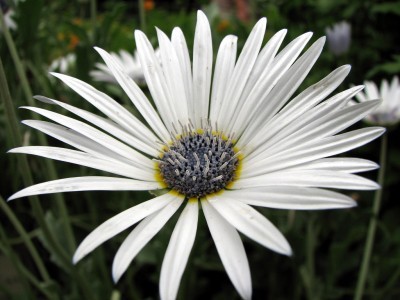






Humans have been manipulating the world around them for thousands of years. We have changed the landscape, crossbred animals and used the hybridization of plants, all to create change that benefits our lives. What is hybridization? Keep reading to learn more.
Hybridization is growing two plants together in a special way to help the plants develop the natural traits we like. Hybridization differs from Genetically Modified Organisms (GMOs) because hybridization takes advantage of traits natural to the plant, where GMO inserts traits that are not natural to the plant.
Plant hybridization can be used to create flowers with new and prettier designs, vegetables that taste better or fruits that resist disease in the garden. It can be as complicated as elaborate commercial farming operations or as simple as a gardener trying to create a better shade of pink roses.
Every living thing on Earth has certain traits that identify it, and these traits are passed down to its offspring. Each generation shows traits that are a combination of half male parent and half female parent. Each parent contributes a possible trait for the offspring to show, but the final product can be random within certain guidelines.
For instance, if you breed a male cocker spaniel with a female cocker spaniel, the puppies will end up looking like cocker spaniels. If you cross one of the parents with a poodle, however, some puppies will look like cocker, some like poodle, and some like cockapoos. The cockapoo is a hybrid dog, with traits from both parents.
It works the same way with plants. Take marigolds, for example. Cross a yellow marigold with a bronze marigold and you may end up with a bicolored flower or one with more yellow or bronze. Introducing the extra traits into the mix gives you a chance at different offspring from the parents. Once you have a trait you want to show up, crossing existing plants is the way to try to grow more crops with better traits.
Who uses plant hybridization? Growers who want to find tomatoes that last longer on the shelves while still tasting good, manufacturers who want to produce beans that resist common diseases and even scientists who are looking for grains that contain more nutrition to try to help famine-stricken areas.
When you look at information about hybrid plants though, you’ll find thousands of amateur growers just trying to create interesting variations on old favorites. One of the most famous home hybridization experiments has been held for decades, looking for a pure white marigold flower. Gardeners who grow hibiscus know they can cross two flowers and get a completely different plant.
From huge commercial growers to individual gardeners, people are using hybridization to create an endless variety of new growing plants.
What There Is To Know About Organic Horticulture
Information about Petunia Flowers
Information about Cotoneaster Plant
What Is A Food Desert: Information About Food Deserts In America
What Is A Volunteer Plant: Learn About Volunteer Plants In Gardens
What Is Guerrilla Gardening: Information On Creating Guerrilla Gardens
What Is A Rockery – Information On Garden Rockery Construction
What Is All Of The Buzz About Organic Gardening?
The Best Information About Gardening That Exists
Verticillium wilt: how to diagnose it, what to do about it
What Is A Native Plant: Learn About Native Plant Benefits In The Garden
What Is Wild Harvesting: Learn About The Dangers Of Wild Harvesting
What Are Aerial Roots: Information About Aerial Roots On Houseplants
Copyright © www.100flowers.win Botanic Garden All Rights Reserved